Spatial
LandLAB 19 Tank Park
-
Pou Auaha / Creative Director
Henry Crothers
-
Ringatoi Matua / Design Director
Ethan Reid
-
Ngā Kaimahi / Team Members
Bela Grimsdale, Greer Carmine, Zihao Wang, James Ring -
Kaitautoko / Contributors
Tessa Harris, Reuben Kirkwood, Beca, Wynyard Edge Alliance, Alta, Switch Lighting, Design Production, John Fillmore Contracting, Fresh Concept, Angus Muir Design, Jason Smith, Negative Space -
Client
Eke Panuku

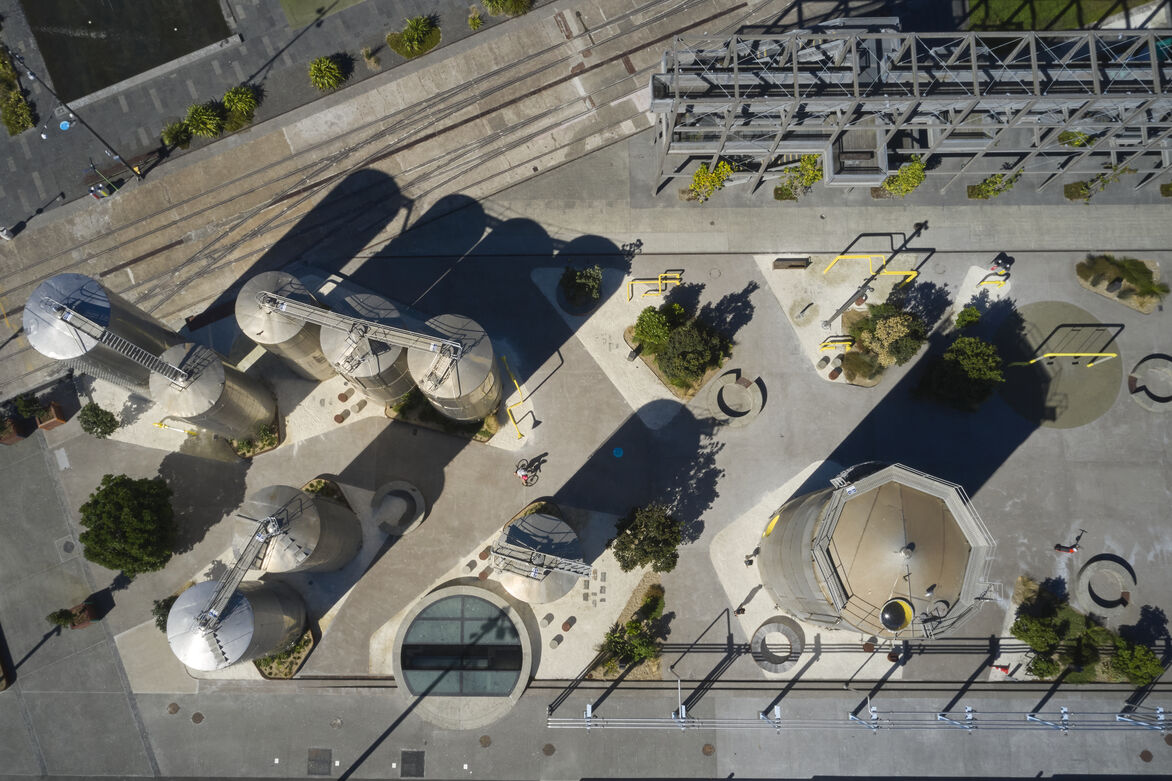
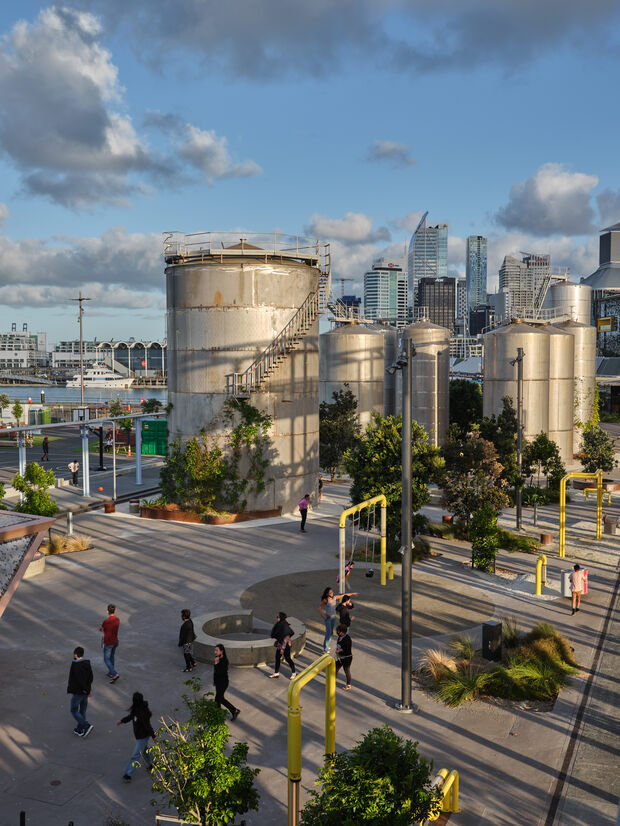
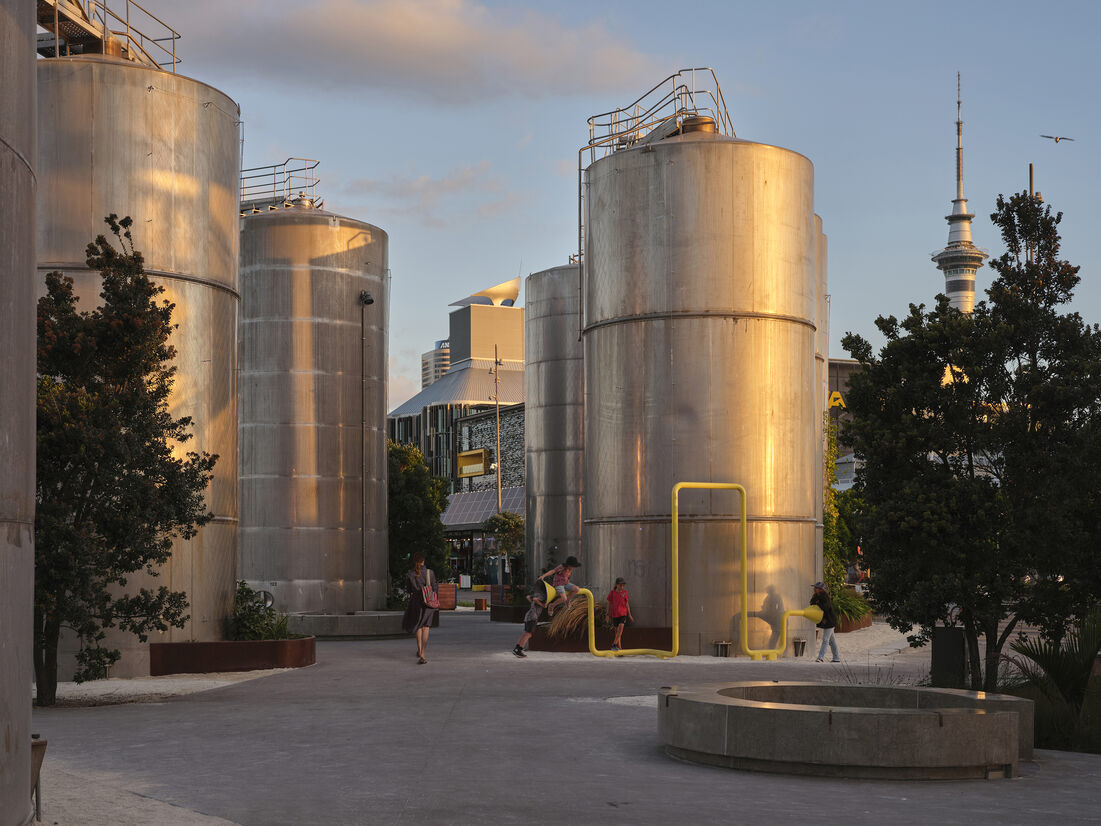
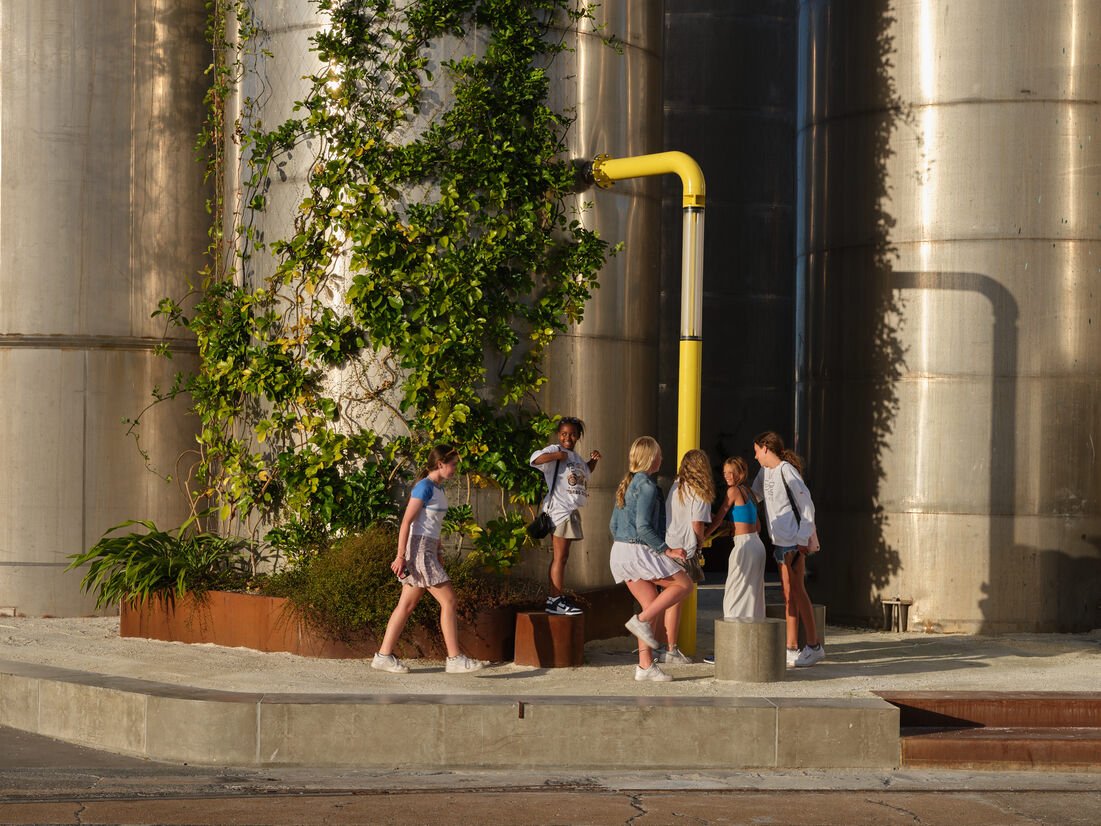
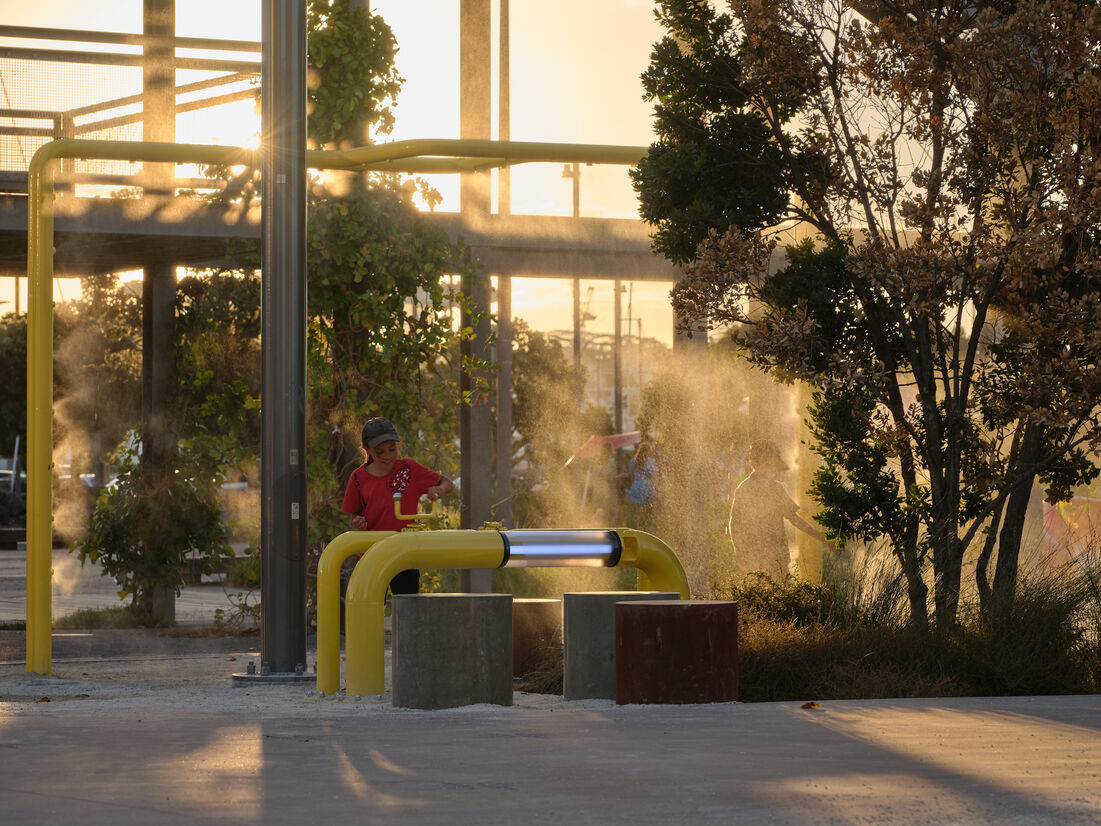

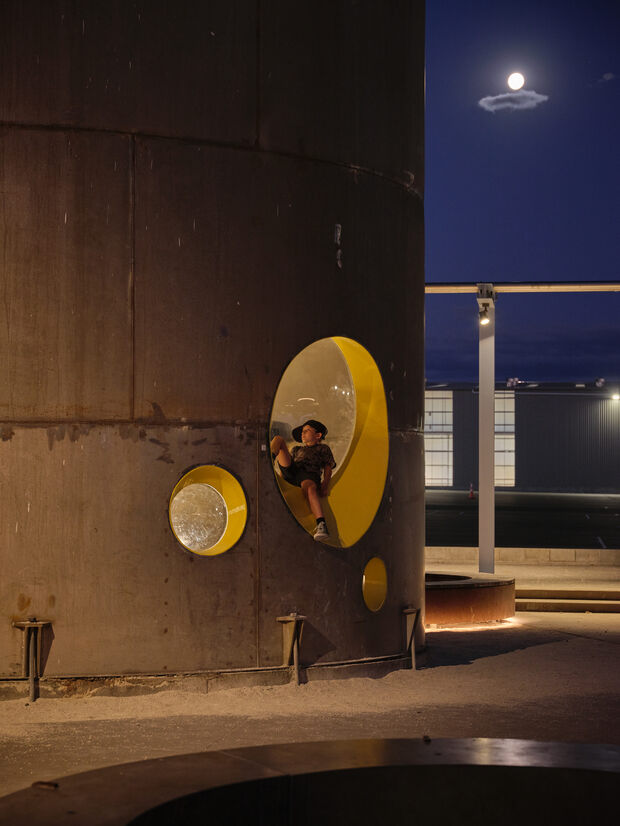
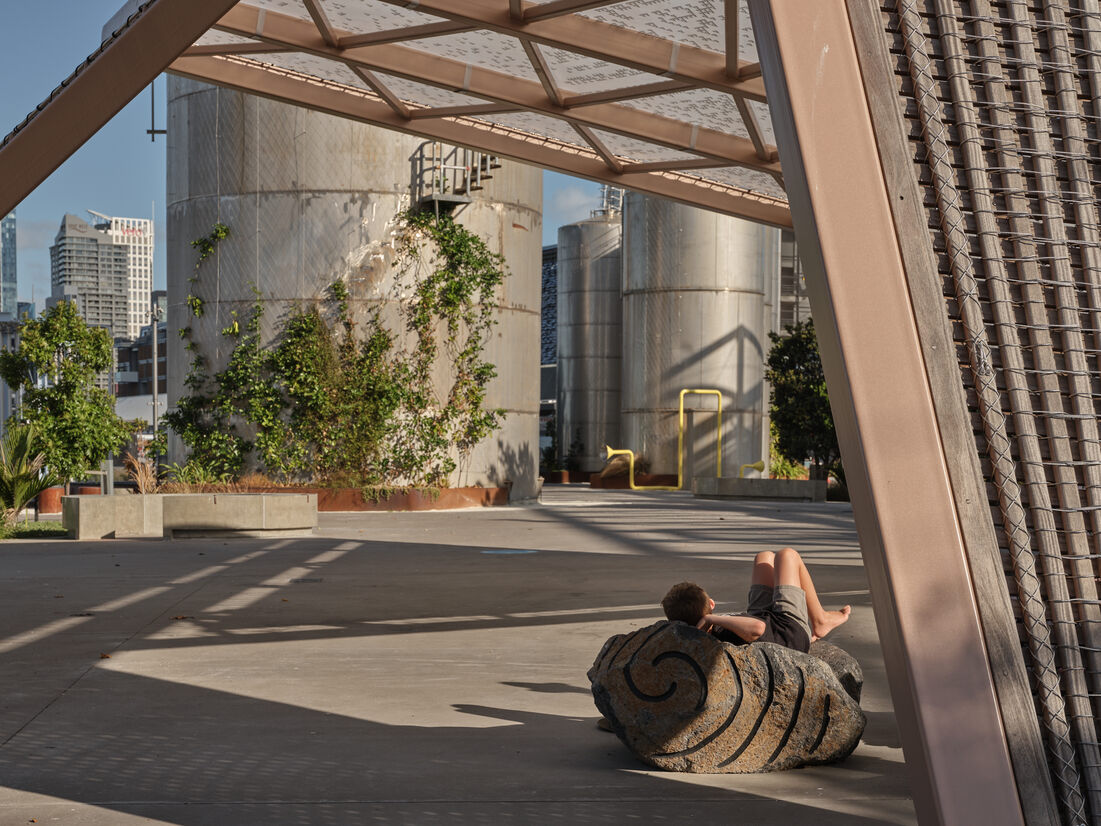
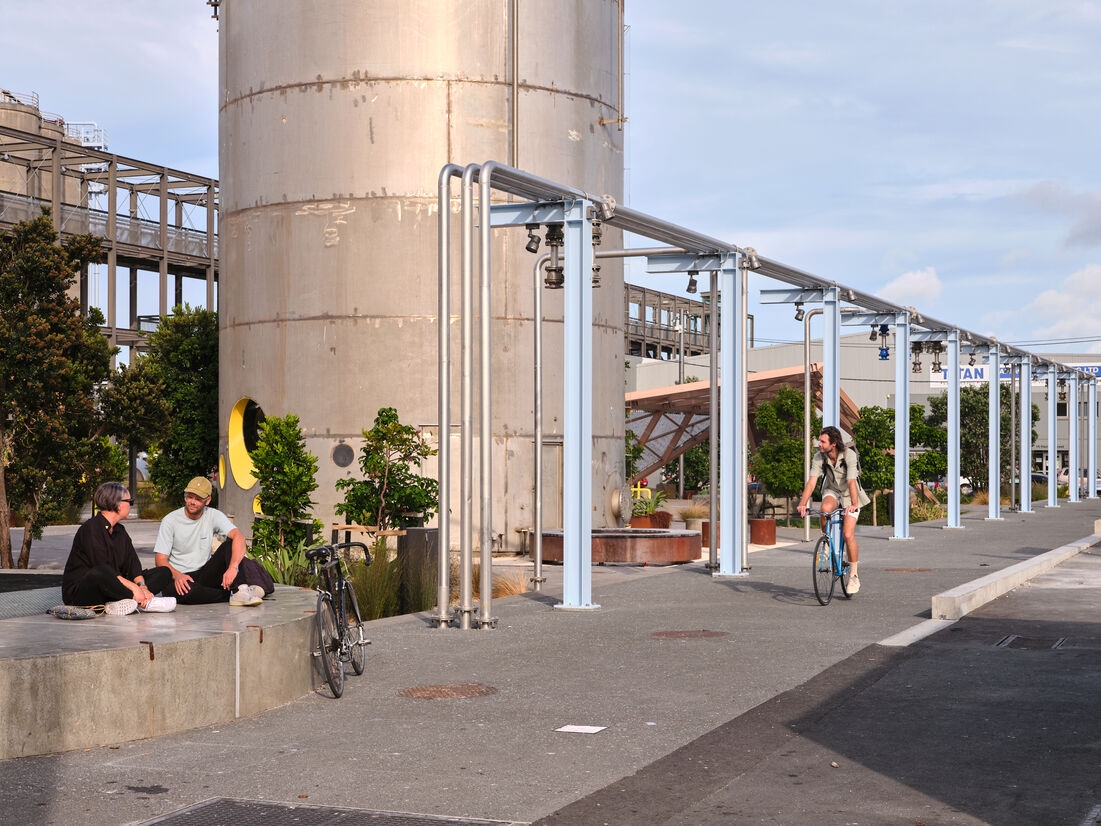
Description:
Tank Park creatively adapts and reveals the site's unique post-industrial character (near mythology) into an authentic, engaging and immersive landscape experience. A landmark at the confluence of land and sea, the ‘waterfront’ and ‘park’ axes defining the geographical heart of the Wynyard Quarter.
Formerly known as Waiatarau ‘The Reflecting Waters’ – the site was reclaimed from the Waitematā over the last century. Previously providing bulk storage of cooking oils, petro-chemicals and caustic soda in keeping with the colloquial ‘Tank Farm’ name.
A flexible and adaptable space that enables a variety of operational modes and strategic placemaking initiatives that complement and contrast with the adjacent Silo Park. A new range of public realm experiences that evolves over time through a choreographed program of intervention, occupation and event.
This remnant infrastructure provided a ‘forest’ of tanks only navigable by a network of walkways and stairs unsuitable for public access. Through selective editing and adaptive re-use of found archaeology, this project transforms ‘Tank Farm’ into ‘Tank Park’ by providing a new range of immersive, social, and play activities that adapt and reveal the site’s unique post-industrial character into authentic and engaging landscape experiences.
The former Exchanger Pit – once the confluence for all liquids moving in or out of the storage terminal - is retained as an interpretive feature and functional ‘heart’ of the former vast network of taps, pipes and pumps.
The Playline is a suite of all-ages, industrial play elements crafted and re-purposed from the site's former network of pipes, taps and valves. These are distributed along the southern edge - emerging from the ground as a playful recollection of the complex functions which once took place here - incorporating the tactile additions of light, sound, water and play.
The Pipeline recalls the overhead transmission of liquids and mediates the open northerly edge against future development. It hosts an array of flexible lighting, which supports activation of the site at dawn, dusk and into the night.
Te Nukuao (The Shelter) represents the deep connections that Tangata whenua hold as kaitiaki (guardians) of the whenua (land) and waters (Moana)—designed in collaboration with mana whenua artist Tessa Harris (Ngāi Tai ki Tāmaki) as a ‘cultural marker’ within the site.
A native planting palette provides a counterpoint to the industrial elements and establishes a wild, socially vital and ecologically rich new coastal forest. A simple but contextual ground plane references the tank-built forms, a single connecting surface.
Tank Park celebrates and reveals the unique history of this particular whenua (land), inviting the public into kōrero (conversation) and physical interaction with industrial, marine and pre-colonial landscape histories. The tanks retain authentic character while defining new spaces, filtered views, and carving spaces for discovery or occupation. Using salvaged industrial components from the site deepens the authentic experience and creates an immersive, intimate connection to a former working waterfront and industrial landscape.
Winner of a Monocle Design Award in 2022 and was a finalist in the 2020 WAN, 2021 Landezine and 2021 WAF awards programs.
Judge's comments:
This project carefully curates and retrofits existing industrial elements into a contemporary new open space. It invites you to explore, discover and play - whilst cleverly adapting and reclaiming a space that has been inaccessible to the public for decades. Tank Park is a welcome new addition to the Auckland waterfront.
A joyful experience has been created for the whole community through the clever repurposed use of industrial remnants.
The area known as the Tank Farm has long been a symbol of decline and a banner for urban regeneration. Tank Park is a really great space and its becoming the poster child for post-industrial urban spaces.